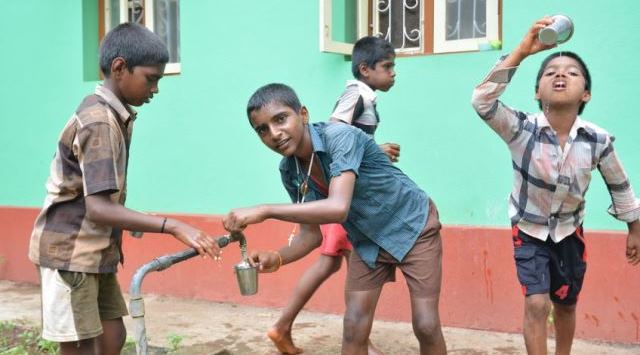Through partnership with the charity organisation B1G1, Rob O’Byrne and his consulting company, Logistics Bureau, have provided close to 1.5 million days of access to fresh water for people in countries where that simple commodity is a life-saving luxury.
In conducting the normal, day-to-day business of supply chain and logistics consulting, Rob’s team and his customers save lives by donating a small amount of Logistics Bureau’s revenue to those who can’t just take a glass of water when they feel a little thirsty.
Why We Shouldn’t Take a Glass of Water for Granted

It’s easy to forget that there are places in the world where fundamentals like clean water are missing from people’s lives, but sharing a few facts about five of those places might just give you something to think about the next time you fill your glass with water from your kitchen tap.
1. Bangladesh
In Bangladesh, some 100,000 children die every year from diseases related to contaminated water. High concentrations of arsenic exist in the country’s groundwater, on which Bangladeshis rely.
This contamination has led to the official closure of many wells, although a general lack of water forces people to continue using them. Where wells are not available, community members are forced to draw their water from ponds or ditches, hence the high death toll resulting from diarrheal disease.
2. Afghanistan
Access to fresh water in Afghanistan is shrinking by the day, thanks to the many years of war that have torn the country to shreds.
The percentage of people who are able to drink clean water in Afghanistan is the lowest in the world. Even in the nation’s capital, Kabul, 80% of the population has no way to obtain safe, potable water to drink.
3. Ethiopia
Just 42% of the Ethiopian population has access to an improved water supply and only 11% to clean sanitation. Women and children in Ethiopia may journey on foot for up to six hours at a time to fetch water—which they draw from pools that are likely as not contaminated with fecal matter. Think on that when you turn on the kitchen tap to pour a glass of water.
4. India
In India, water availability is not so much a problem as its quality, particularly in rural areas. Even in regions with piped water supplies, the water is often untreated and therefore unsafe to drink. Around 700 million people live without a safe water supply.
It might be tempting to criticize the country’s government for problems with its water infrastructure, but in the time it will take you to make a comment, another Indian child will have died from waterborne disease.
5. Cambodia
Despite the fact that the mighty Mekong River flows through Cambodia, 84% of the nation’s population has no access to safe, clean drinking water. A number of factors contribute to the water crisis, both within Cambodia and neighbouring Laos. Water levels in the Mekong are low, communities rely on rainwater for drinking, and Laos and Cambodia both have a problem with water-contamination.
Raise Your Glass (of Water) to B1G1

Charitable organisations like B1G1 make a big difference to people in countries where fresh water is a luxury. However, there is a long way to go until people everywhere can see safe water as what it should be—an essential everyday commodity.
So the next time you take a glass of water from the tap or spend a couple of dollars on a bottle of mineral water, please spare a thought for our brothers and sisters who are far less fortunate. Better still, take that couple of dollars and give it to a charity that supports water projects. The price of your bottled water can literally save a child’s life, while you can just go turn the tap on.

Best Regards,
Rob O’Byrne
Email or +61 417 417 307



Trackbacks/Pingbacks